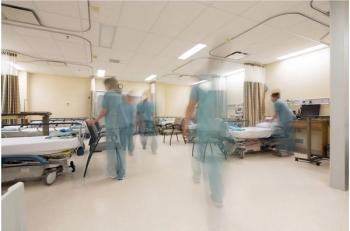
Neurogenic: Horner Syndrome
Anisocoria and partial eyelid ptosis were detected during the routine eye examination of a 66-year-old woman. These findings had not been present during an examination 2 years earlier. Because the patient had no symptoms, she could not recall when these signs began. Her general health was unremarkable; she had smoked 1 pack of cigarettes per day for 40 years
Anisocoria and partial eyelid ptosis were detected duringthe routine eye examination of a 66-year-old woman. Thesefindings had not been present during an examination 2years earlier. Because the patient had no symptoms, shecould not recall when these signs began. Her generalhealth was unremarkable; she had smoked 1 pack of cigarettesper day for 40 years.The margin reflex distance test, which demonstratesthe distance from the light reflex on the cornea to thecentral upper eyelid in straight gaze, showed a mild ptosislimited to 1 or 2 mm that resulted from weakness ofthe Mueller muscle. The involved pupil was smaller thanthe unaffected pupil, and the anisocoria increased in dimillumination. Anisocoria is greatest after about 5 secondsof darkness, when the normal pupil is as large as it canbecome1; the affected pupil then dilates slowly. This dilationlag is characteristic and virtually diagnostic ofHorner syndrome. When the lesion is below the superiorcervical ganglion, reduced ipsilateral sweating or anhidrosisof the face may be present.Horner syndrome involves the fibers that compose theoculosympathetic pathway. These fibers have a long andtortuous course from the hypothalamus to the eye. A varietyof vascular, traumatic, or neoplastic lesions can interruptthis pathway. The cocaine test is usedto confirm the diagnosis.2 Cocaine,10%, is applied topically to both eyes.Normally, cocaine produces dilation ofthe pupil by preventing the reuptakeof norepinephrine that has been releasedinto the synaptic junctions ofthe iris dilator muscle. If the sympatheticinnervation to the eye is interrupted,cocaine should have no mydriaticeffect. This patient's left pupil didnot dilate in response to topical cocaine,which confirmed the suspecteddiagnosis of Horner syndrome.Hydroxyamphetamine is usedto help distinguish a preganglionicor central lesion from a postganglioniclesion.2This drug is an indirectlyacting α-adrenergic agonist that dilates the pupilonly in the presence of endogenous norepinephrine. Inpatients who have central or preganglionic lesions, thepostganglionic sympathetic pathway is undisturbed; thus,the norepinephrine contained within the presynaptic vesiclesis released, and normal mydriasis occurs. In patientswith postganglionic lesions (which are considered to besecondary to "benign" causes, such as endarterectomyor other neck surgery, trauma, or migraine variants), theinvolved pupil does not dilate when topical hydroxyamphetamineis applied.Instilled hydroxyamphetamine caused this patient'spupil to dilate, signaling the presence of either a central ora preganglionic lesion. Because of her history of longtermsmoking, a chest film was obtained. An apical lungneoplasm known as a Pancoast tumor was found; it waslater identified as an oat cell carcinoma. The patient wasreferred to a pulmonologist, and the neoplasm was successfullytreated.
Newsletter
Enhance your clinical practice with the Patient Care newsletter, offering the latest evidence-based guidelines, diagnostic insights, and treatment strategies for primary care physicians.






















































































































































































































































































































